Attractions in Nyungwe Forest National Park
Attractions in Nyungwe Forest National Park : Nyungwe Forest National Park, situated in southwestern Rwanda, is among the most biodiverse areas in Africa. The park spans over 1000 square kilometers and hosts a diverse array of primates, avifauna, and flora, rendering it a favored locale for nature enthusiasts and adventurers.
A prime attraction of Nyungwe Forest National Park is the chance to track chimpanzees. The park hosts around 500 chimpanzees, rendering it one of the premier locations globally to see these remarkable primates in their natural environment. Visitors may participate in a guided expedition through the deep jungle to observe the chimpanzees closely. The expedition is conducted by skilled guides adept at locating chimpanzees and safeguarding visitors’ safety.
Primate species
Attractions in Nyungwe Forest National Park : The 13 primate species have consistently served as the emblematic attraction of Nyungwe Forest National Park and Rwanda. The remarkable range of distinct primate species inhabiting the verdant tropical rainforest renders the park an essential trip for every traveler in the country.
Chimpanzees are the predominant primate species in this park; however, other species that may be observed include L’Hoest’s monkeys, red-tailed monkeys, blue monkeys, Dent’s Mona monkeys, Vervet monkeys, olive baboons, grey-cheeked mangabeys, Angolan Colobus monkeys, Hamlyn’s monkeys, golden monkeys, owl-faced monkeys, and silver monkey
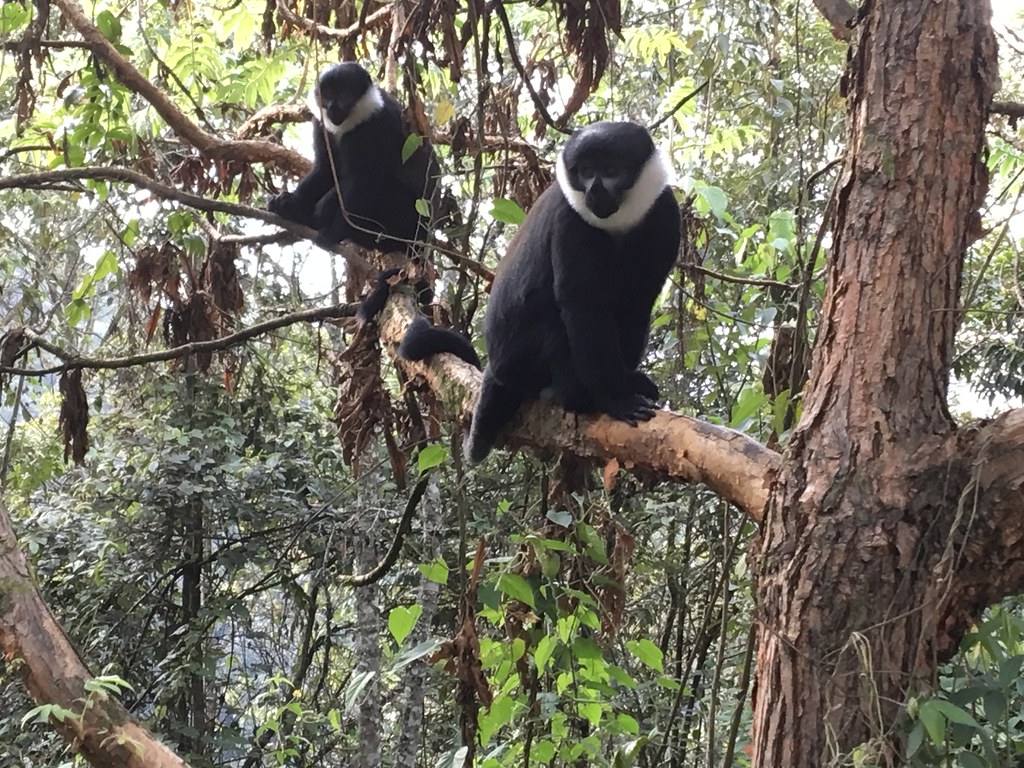
The Canopy Walk
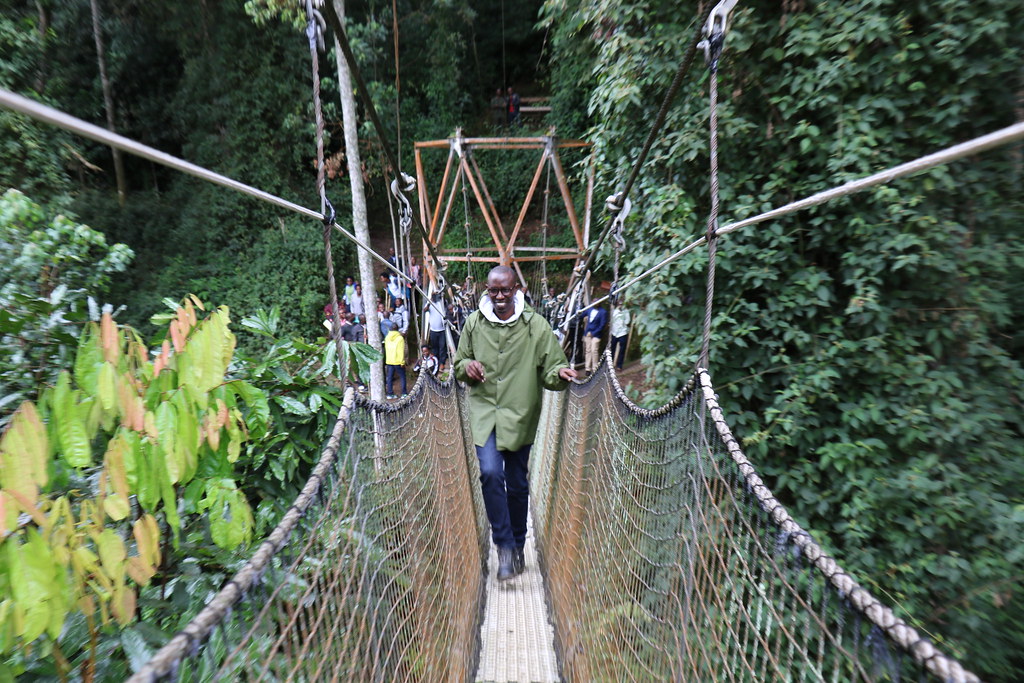
Nyungwe Forest National Park is one of the few locations in Rwanda that offers the remarkable canopy walk, and it is the sole site for this experience in East Africa. Experiencing the canopy walk is akin to being atop the world, as the vantage point from the treetops offers a wonderful perspective, rewarding visitors with breathtaking and delightful diversity of wildlife, avian species, and arboreal varieties.
Anticipate observing Rwenzori Colobus monkeys, Vervet monkeys, L’Hoest’s monkeys, red-tailed monkeys, blue monkeys, grey-cheeked mangabeys, and avian species including Rwenzori batis, handsome francolins, and strange weavers, among others, during the 2-hour canopy walk along the 200-meter trail situated 50 meters above the forest floor.
The Birds
Attractions in Nyungwe Forest National Park : Nyungwe Forest National Park is an expansive woodland abundant in avian species located in southwestern Rwanda. It has more than 300 avian species, including endemic species of the Albertine Rift, such as the handsome francolin and Rwenzori batis, among others. Additional species such the Great Blue Turaco, Collared Apalis, Regal Sunbirds, Red-throated Alethe, Paradise Flycatcher, and Rockefeller’s Sunbirds are essential observations.
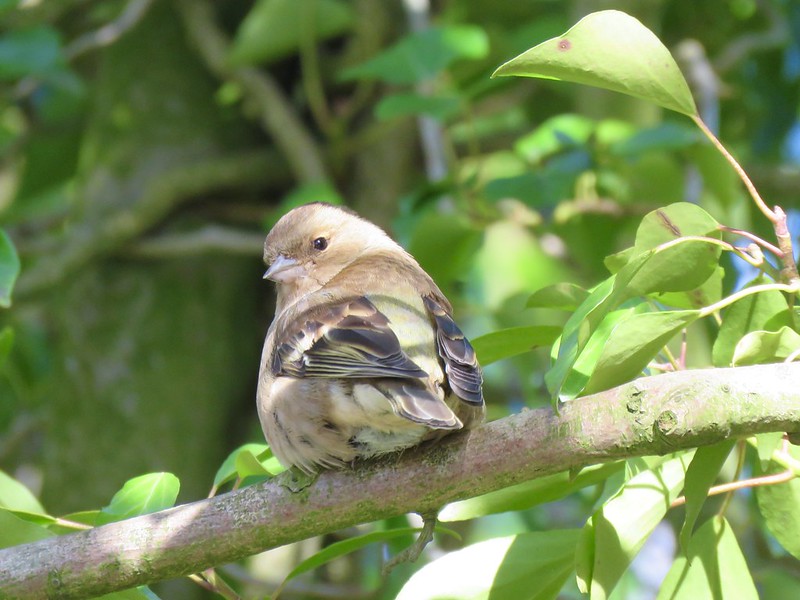
A multitude of trails
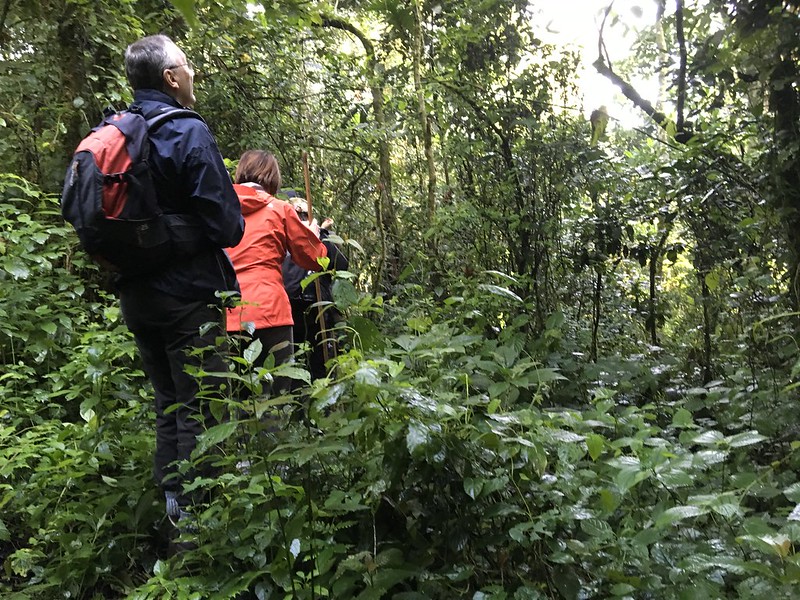
Attractions in Nyungwe Forest National Park : Numerous hiking paths have become a major attraction in Nyungwe National Park. The Forest offers visitors a unique opportunity to trek through a quintessential forest. A rewarding hike in the verdant Nyungwe Forest entails experiencing stunning waterfalls, distinctive tree species, diverse avian species including Albertine Rift endemics, and varied fauna, including primates.
Trails like as Igishigishigi, Bigugu, Isumo Waterfall, and Kamiranzovu Wetland provide ample trekking opportunities within this lush forest. Each of these routes provides a unique experience with diverse attractions.
Visit the Gisakura Tea Plantation
Attractions in Nyungwe Forest National Park : Exploring the Gisakura tea estate offers an opportunity to experience the diverse parallel ridges of tea and the picturesque mountains that serve as a stunning backdrop for the plantation, particularly for tea enthusiasts. During weekdays (Monday to Saturday), visitors can observe amiable farmers harvesting tea and gathering it in baskets, who are often willing to take a moment to greet tourists.
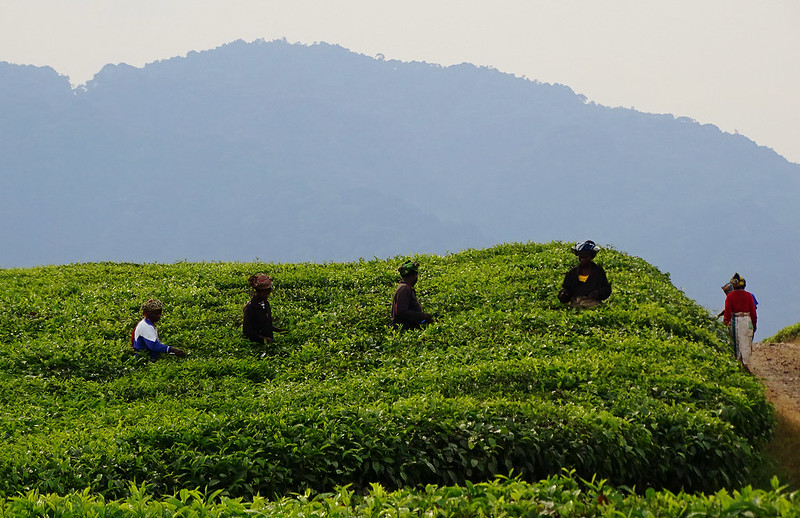
Directions to Nyungwe Forest National Park
Nyungwe Forest National Park is located in southwestern Rwanda, adjacent to Burundi to the south and the Democratic Republic of the Congo/Lake Kivu to the west, approximately a two-hour drive from Kigali International Airport.
Consider organizing an extended holiday expedition to Rwanda, incorporating renowned destinations such as Volcanoes National Park, celebrated for gorilla tracking and golden monkey treks, or prepare to discover Akagera National Park with a nocturnal game safari to observe nocturnal mammals, or participate in a boat cruise on Lake Ihema for an unparalleled aquatic wildlife experience in Africa.
Best time to Visit to Nyungwe Forest National Park
Attractions in Nyungwe Forest National Park : Nyungwe Forest National Park is accessible to tourists year-round; Rwanda’s climate patterns are consistent, since the country has two dry seasons and two wet seasons annually. This results in nice and warm weather conditions throughout the country. During the day, temperatures generally ascend to 27°C, while at night, they decrease to a minimum of 12°C. Nyungwe National Park shares a temperature similar to other regions of the country, characterized by a cold temperate atmosphere that visitors typically find agreeable for their excursions.
The best time to visit Nyungwe Forest National Park is during the dry season, which extends from June to October, with the briefest dry months occurring in January and February. The experience of primate adventure, which encompasses Chimpanzee Tracking and Colobus Monkey tracking, among other tourist activities during this dry season, is significantly more remarkable and gratifying. With diminished predictions of precipitation, you will traverse brief thicket with the ground scarcely dry, facilitating passage through the nature trails and providing exhilarating moments of adventure. Note that Nyungwe National Park, as a dense tropical rainforest, may have rain showers at any moment, even during the dry season; however, these showers are often brief.
The rainy season features an extended duration of substantial rainfall from March to late May, accompanied by shorter rains in November and December. During this time, navigating the park may prove difficult due to wet and muddy trails, dense undergrowth, and a high likelihood of heavy downpours. During this month, your trekking experience is much enhanced, as locating the primates (chimpanzees) becomes simpler; they remain in the adjacent forests due to the abundance of figs and food sources.
